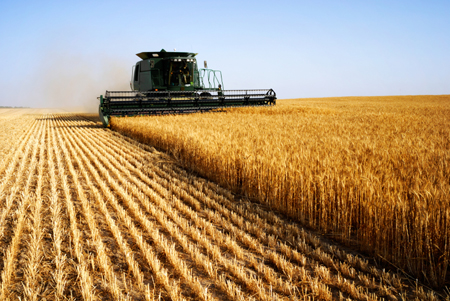Trump Readies Up to $20B More in Aid to Rescue Farmers From Trade War
Category: Trade

(Politico) – The Trump administration could make as much as $20 billion available to farmers in a second round of assistance designed to help offset losses from China’s latest retaliatory tariffs, Agriculture Secretary Sonny Perdue said late Wednesday.
The second installment of trade aid is being modeled after the one last year. USDA pledged up to $12 billion in assistance for 2018 production, mostly in the form of direct payments to farmers stung by retaliatory duties, as well as commodity purchases.
Perdue, speaking from South Korea during a conference call with reporters, said the second round of assistance would likely include more direct payments and commodity purchases.
“Our calculations initially probably range between $15-and-$20 billion,” he said of the estimated economic damage to farmers and the scope of the potential aid package, but he reiterated that many details are still being decided.
Perdue also said USDA was taking into account feedback from last year’s trade aid package. Some commodity groups like corn and wheat growers were not pleased with the amount of assistance their farmers received under the plan.
“We will look at the history of what happened with that program and we’ll try to learn from it and improve from it and address some of those stakeholder comments,” he told reporters.
In terms of timing, Perdue didn’t give an estimate of when the plan would be announced, but he said USDA was “expediting” its work at President Donald Trump’s request. The secretary said the program would comply with WTO limits on agricultural subsidies.
Perdue said the money could once again be funneled through the Commodity Credit Corporation. The administration is also considering whether trade mitigation funds could be provided through a disaster aid bill currently being negotiated on Capitol Hill, he added.
Perdue had said for months that the administration’s initial trade aid program would not be replicated this year and that farmers would have to navigate turbulent trade markets on their own as they made decisions for 2019 planting.
But the administration changed course after the U.S.-China tariff battle intensified earlier this month. Trump hiked tariffs to 25 percent on $200 billion worth of Chinese imports, from 10 percent previously, after U.S. negotiators charged that Beijing had backpedaled on specific commitments made during the yearlong trade negotiations.
China responded by raising tariffs on $60 billion worth of American exports, effective June 1, many of which were already subject to retaliation.
The Trump administration has also begun the process of preparing to impose 25 percent tariffs on Chinese imports that have escaped duties thus far during the trade standoff, which amounts to roughly $300 billion in additional goods. The administration said earlier this week that a final decision on that potential action may not be made before Trump and Chinese President Xi Jinping meet in late June in Osaka, Japan — an opportunity for face-to-face talks that is shaping up to be a pivotal moment in the trade war.
The most recent tit-for-tat between the world’s two largest economies dashed hopes that a resolution to the U.S.-China dispute was within reach and jolted commodity markets from soybeans to pork to cotton.
The escalation also presaged another setback for U.S. farmers, whose products last year were hit with tariffs by major trading partners like Mexico, Canada and the European Union, in addition to the levies imposed by Beijing. The fallout on U.S. farms and ranches deepened what had already been a multi-year downturn in commodity prices that has helped fuel a sharp decline in net farm income since 2013.
Proponents of the administration’s trade-aid efforts contend agricultural producers shouldn’t have to bear the burden of a White House quest to balance U.S. trade relationships, including an attempt to crack down on China‘s practice of stealing intellectual property and forcing foreign companies to hand over valuable technology in order to access the Chinese market. But critics are likely to argue that Trump is trying to placate farmers and ranchers — a key base of conservative political support — ahead of the 2020 election by throwing more money at a problem of the administration’s own making.
Under USDA’s first aid package, about $9.5 billion was slated for direct payments to farmers and ranchers, though expenditures for that portion of the program to date are about $8.5 billion. The initial program set aside another $1.2 billion for purchase of surplus commodities, which were to be donated to federal nutrition programs and food banks. Another $200 million was allocated for efforts to promote U.S. goods overseas.
The first batch of trade aid was met with complaints, primarily from corn and wheat growers, that the formulas used to calculate direct assistance didn’t adequately reflect their losses. The National Corn Growers Association on Wednesday said the penny-per-bushel payment rate for corn farmers under the previous program “didn’t cut it then and won’t cut it now.”

